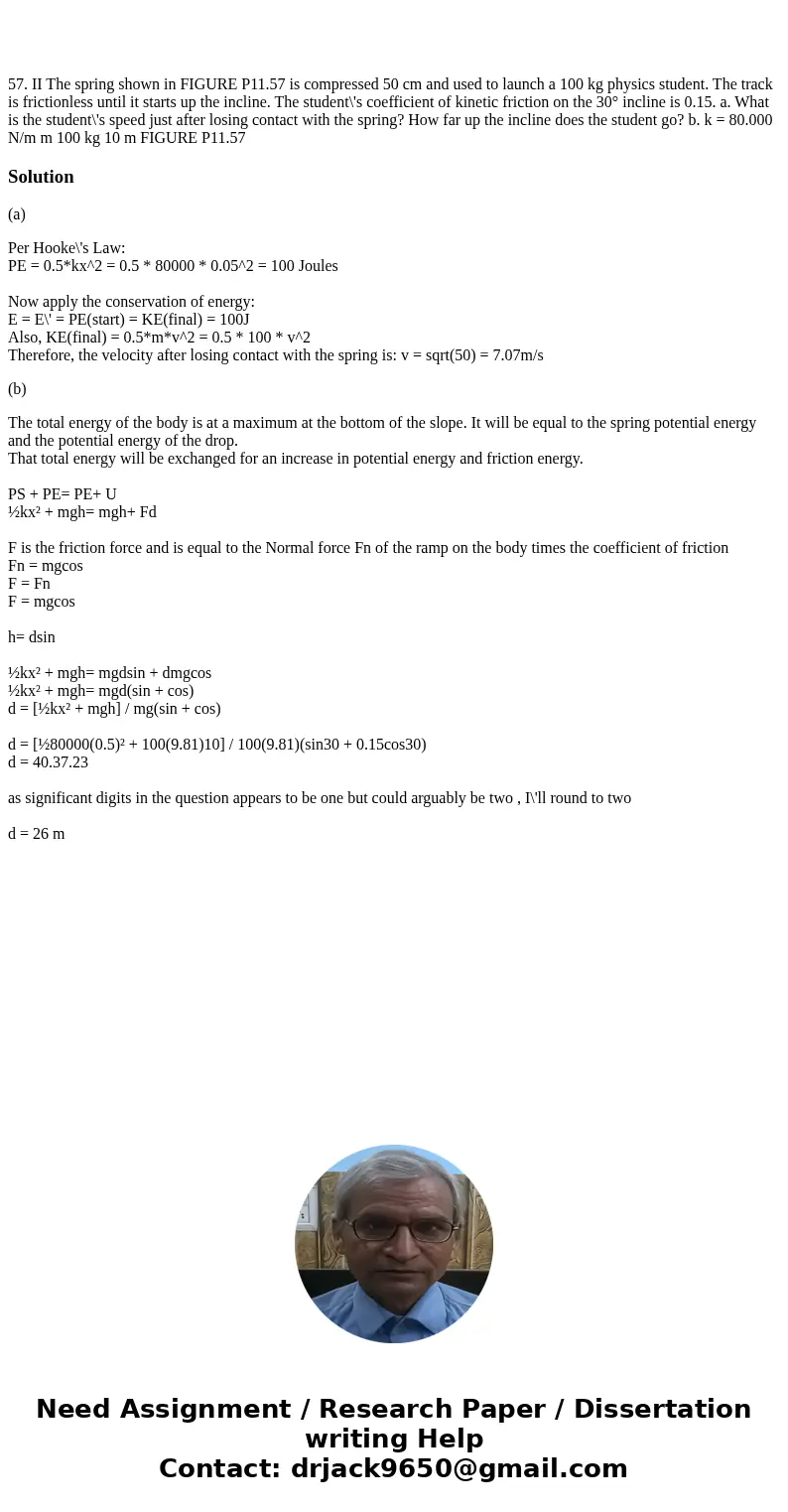57 II The spring shown in FIGURE P1157 is compressed 50 cm a
Solution
(a)
Per Hooke\'s Law:
PE = 0.5*kx^2 = 0.5 * 80000 * 0.05^2 = 100 Joules
Now apply the conservation of energy:
E = E\' = PE(start) = KE(final) = 100J
Also, KE(final) = 0.5*m*v^2 = 0.5 * 100 * v^2
Therefore, the velocity after losing contact with the spring is: v = sqrt(50) = 7.07m/s
(b)
The total energy of the body is at a maximum at the bottom of the slope. It will be equal to the spring potential energy and the potential energy of the drop.
That total energy will be exchanged for an increase in potential energy and friction energy.
PS + PE= PE+ U
½kx² + mgh= mgh+ Fd
F is the friction force and is equal to the Normal force Fn of the ramp on the body times the coefficient of friction
Fn = mgcos
F = Fn
F = mgcos
h= dsin
½kx² + mgh= mgdsin + dmgcos
½kx² + mgh= mgd(sin + cos)
d = [½kx² + mgh] / mg(sin + cos)
d = [½80000(0.5)² + 100(9.81)10] / 100(9.81)(sin30 + 0.15cos30)
d = 40.37.23
as significant digits in the question appears to be one but could arguably be two , I\'ll round to two
d = 26 m

 Homework Sourse
Homework Sourse